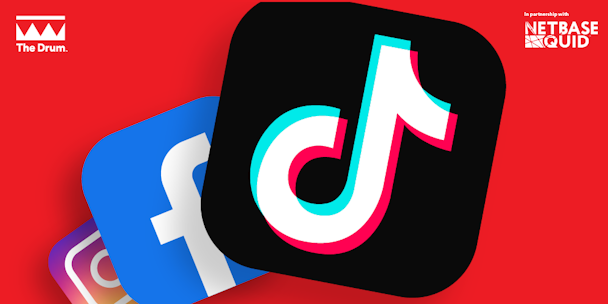Social intelligence is key to unlocking value on TikTok, Instagram and Facebook
Social media use has skyrocketed over the past 18 months. As a result, brands are more interested than ever in accessing valuable consumer insights via leading social platforms TikTok, Instagram and Facebook. However, many marketing teams struggle with where to begin and how best to focus their efforts.

This new webinar will show you how you can use TikTok, Instagram and Facebook insights to inform and fuel your content strategy.
A new webinar from The Drum, in partnership with NetBase Quid, focused on how marketers can use TikTok, Instagram and Facebook insights to inform and fuel your content strategy. The session featured expert tips and advice on how to leverage social conversations from Mike Baglietto, global head of market insights, and Harvey Ranola, global head of media intelligence at NetBase Quid.
Ranola set the scene for the session, outlining the reasons to turn to social media for market insights: “If you're trying to understand your competitive space and you're only doing this on an ad hoc or one-off basis, you're going to miss out. Now, more than ever, consumer behaviors are changing and developing rapidly. Social conversations are extremely dynamic. If you're not actively monitoring the way your customers and your marketplace are evolving over time, you could find yourself falling behind the competition with your campaigns and product strategy.”
Different strokes
TikTok is “exploding right now” among the younger demographic, according to Baglietto. He said: “It’s probably time to start talking about TikTok in terms of your content strategy. There have now been over 2 billion downloads of TikTok, with 800 million active users worldwide. TikTok users are very engaged, spending an average of 21 hours on the platform per month, a year-on-year increase of 325%. The TikTok audience wants to be entertained, so the tone of voice required to succeed on the platform is very different from what works on either Instagram or Facebook.”
Ranola explained how Instagram users, by comparison, are “more transactional”.
“TikTok is currently rolling out some betas that allow user to purchase products on that platform but, right now, Instagram has the advantage,” he said. “32% of the adults on Instagram make between $50k to $70k a year, so we’re talking about a valuable audience.
“500 million people use the platform every day for an average of 30 minutes and 200 million users visit at least one of the 8 million business profiles on Instagram daily. 81% of people research products and services on Instagram, using it as a ‘discovery platform’ to validate their Google research. 55% of shoppers have actually made a purchase based on an Instagram creator’s post.”
Facebook, meanwhile, continues to be the “800-pound gorilla in social media” when it comes to consumer insights. Baglietto said: “Facebook is interesting because it's so huge. 59% of the world's social networking population is on Facebook and the average user clicks on 12 ads per month. 18.3% of US adults made a purchase via Facebook in the last year. During 2020, we saw a big surge in Facebook users supporting local businesses. Two thirds of users now visit a local business page at least once a week.”
Social intelligence
Late in 2020, Baglietto conducted some research that revealed how conversations around the same topic (in this case, Amazon) differed on different social platforms.
“At that time, Facebook users generally had a very negative view of Amazon,” he said. “There was actually a push to boycott Amazon and #shoplocal was beginning to resonate. By contrast, the Instagram conversation around Amazon was extremely positive and the shop local movement wasn’t such a big thing on that platform. Each platform has a unique audience with unique characteristics and the way they consume content and engage with brands is totally different. Rather than adopt a ‘one-size fits all’ approach to social content, it’s important that brands recognize the differences in each individual platform and their user bases.”
There are, however, some similarities in approach that can be applied across all social platforms. According to Baglietto, these include taking time to understand what sort of content is resonating with each platform’s audience and identifying which influencers are driving real engagement: “You want to find influencers, regardless of the channel, that match your brand tone and brand values, and align with the personality of your brand.”
Other topics discussed by the experts from NetBase Quid during the webinar included:
- How Mercedes Benz leveraged professional photography and Instagram influencers to lower the average age of its consumers;
- How to identify and engage the right social influencers for your business;
- The most important metrics to focus on when measuring the effectiveness or success of your efforts on TikTok, Instagram or Facebook.
You can watch the full webinar session for free here
Content created with:

NetBase Quid
NetBase Quid - Next Generation Consumer and Market Intelligence. Support is available through our NB360 Portal under the Help Menu.
Find out more